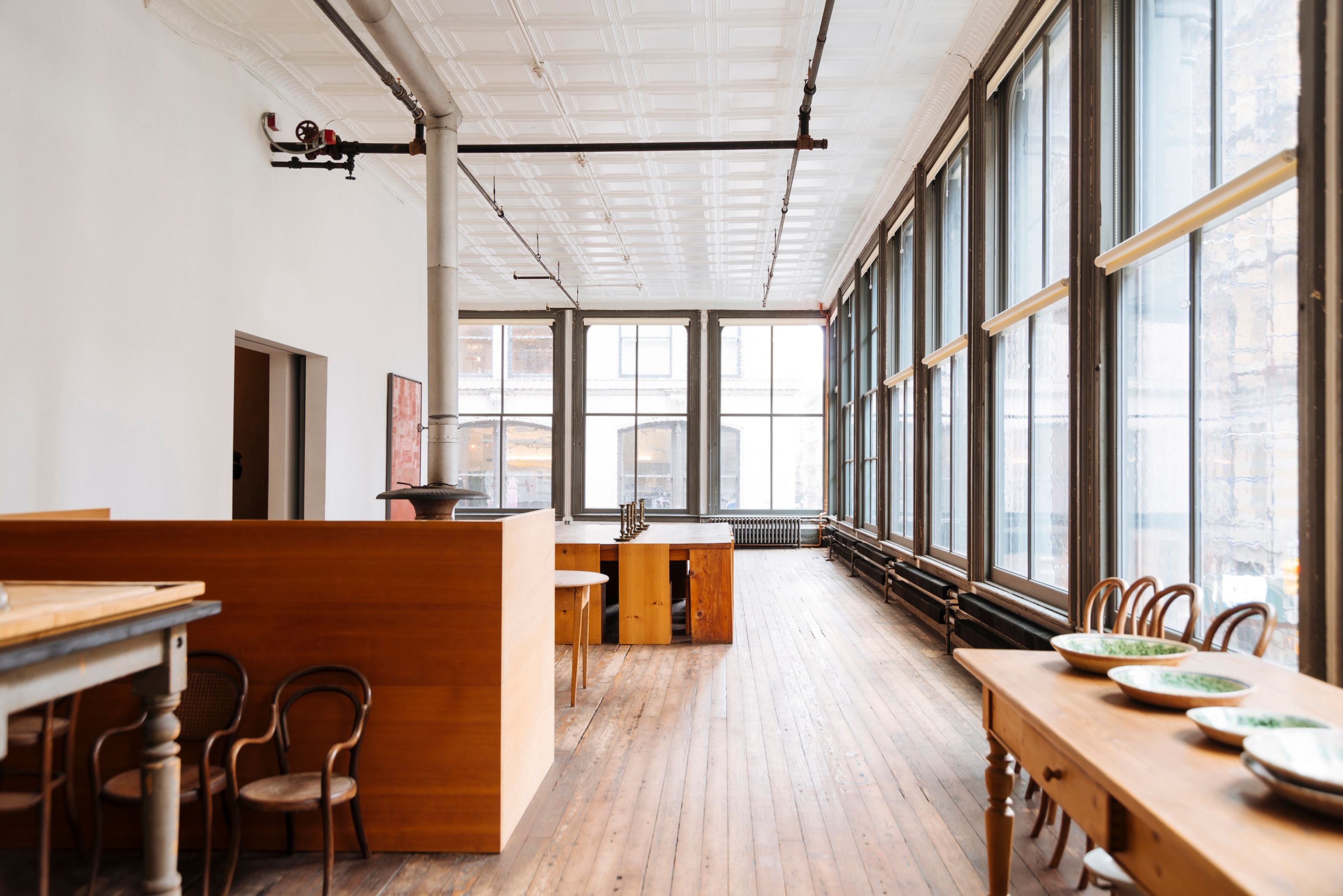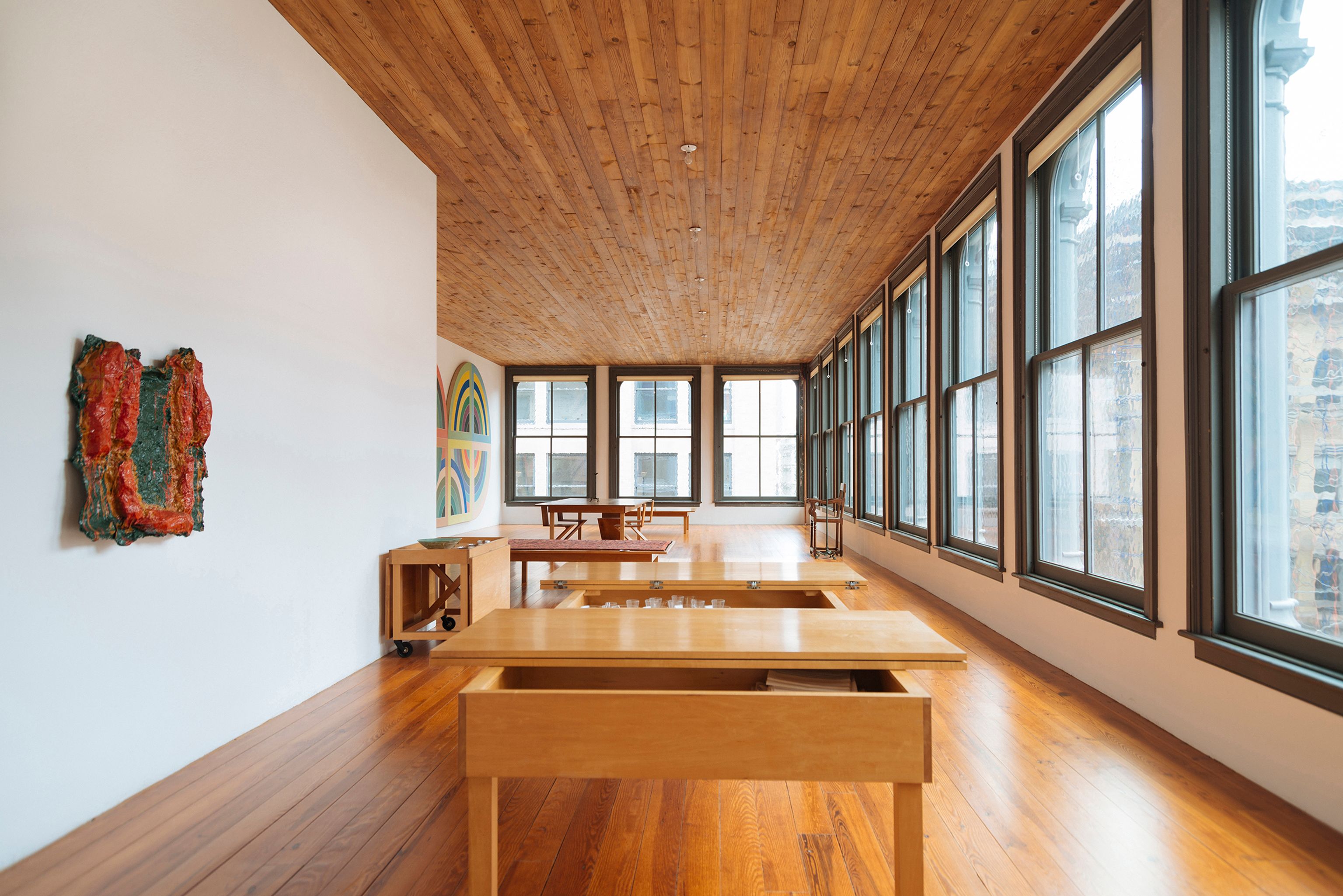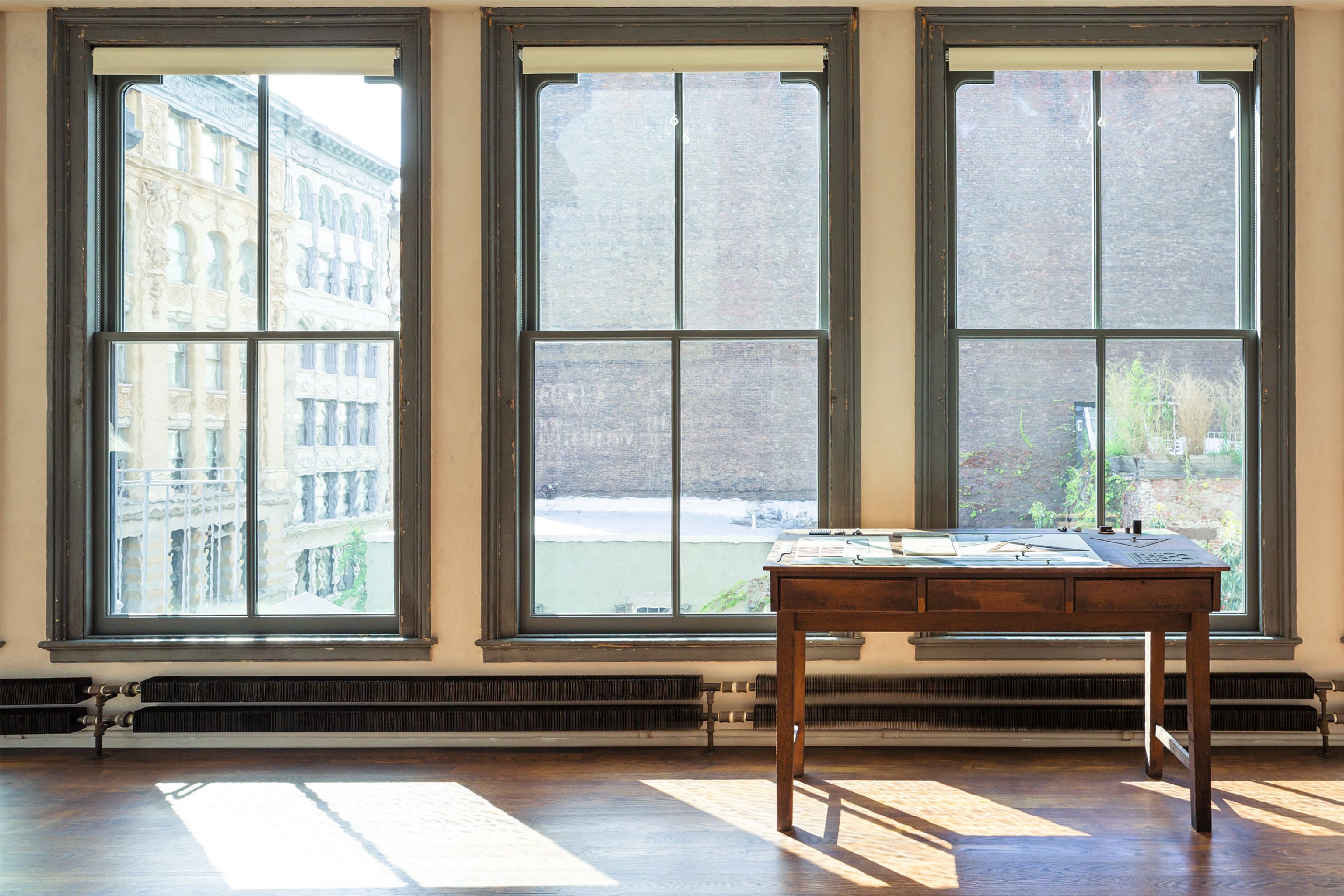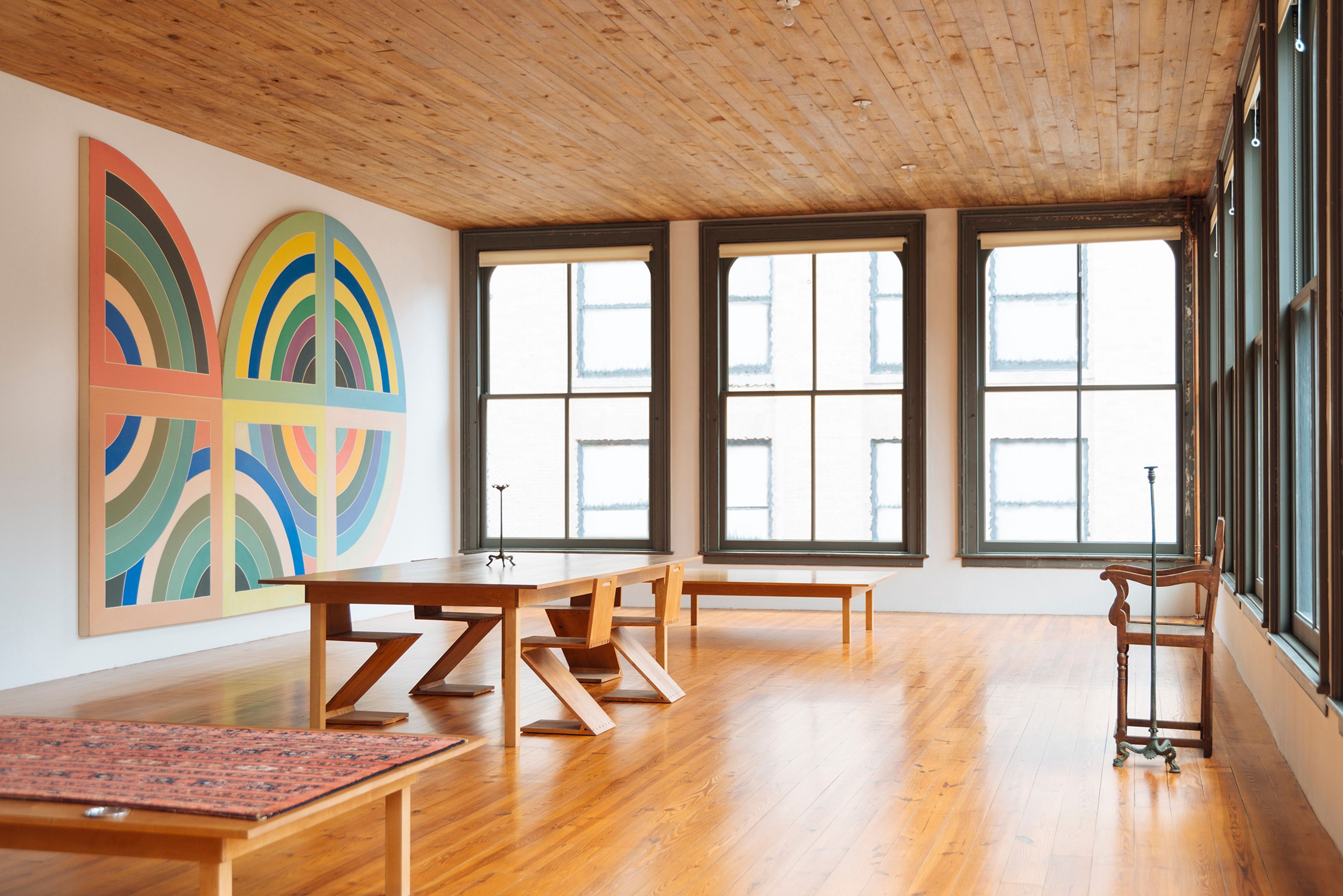
Judd Foundation
Judd Foundation
- ArtistDonald Judd & Judd Foundation
SPACE COPENHAGEN The master of minimalism. Various locations…each articalated wtih a distinct sense of liberation of space through the discipline of restraint.

The Story Behind 101 Spring Street
At the corner of Mercer and Spring Streets in SoHo stands a cast-iron building that quietly changed the way the world thinks about art and space. The five-story structure at 101 Spring Street, now home to the Judd Foundation, was once the residence and studio of Donald Judd - a pioneering artist whose work redefined Minimalism and the boundaries between art, architecture, and life itself.
When Judd bought the building in 1968, SoHo was far from the cultural landmark it is today. The neighborhood was industrial, filled with abandoned factories and loading docks. For Judd, this emptiness was not desolation but opportunity. He saw in the tall windows and open floors the perfect setting for an idea that had obsessed him for years: the creation of a permanent installation, a place where artworks could exist in a fixed relationship to each other, to light, and to the architecture around them.
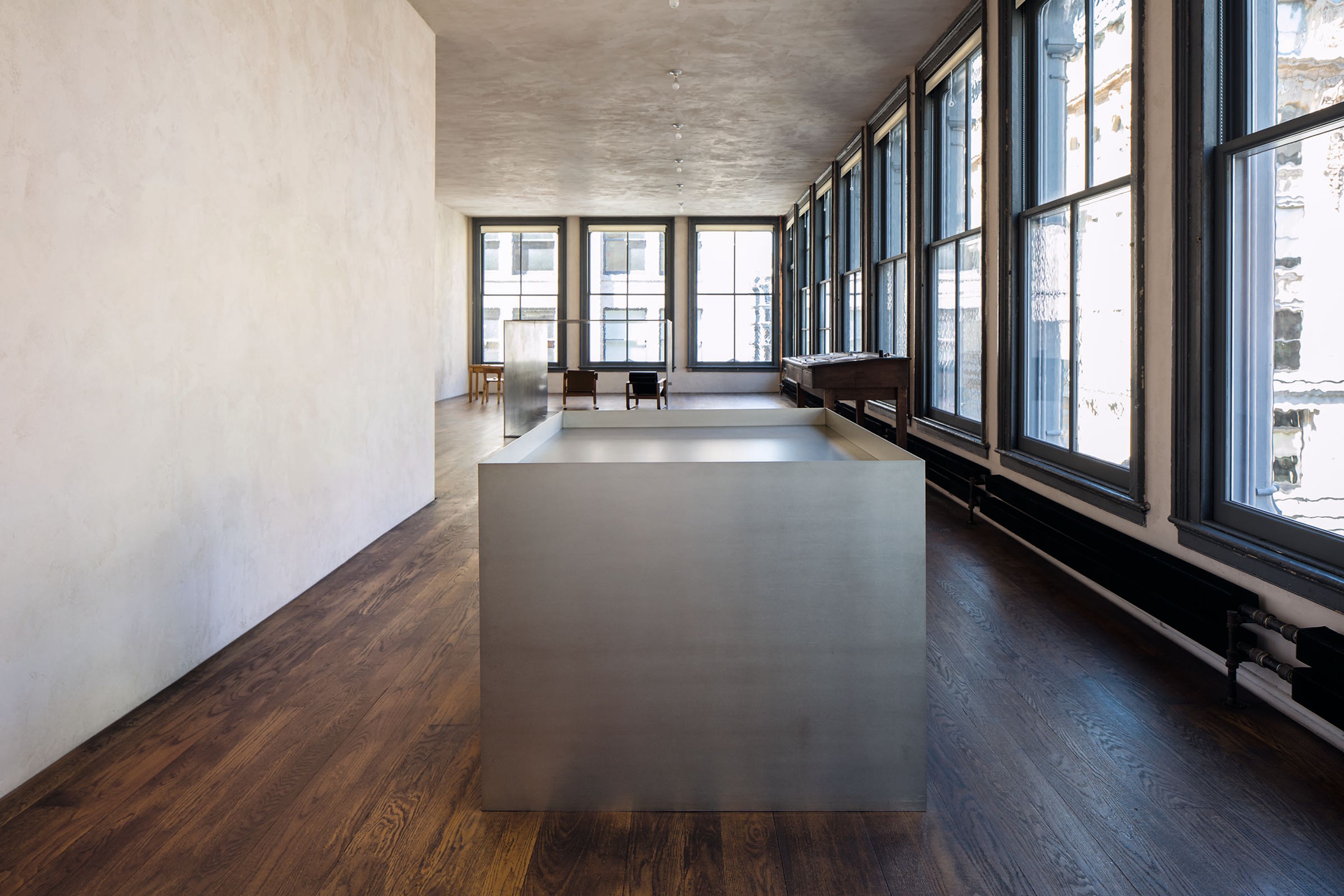
Designed in 1870 by architect Nicholas Whyte, the building’s cast-iron façade and expansive glass panes offered Judd what he valued most: light and space. Inside, he stripped the interior back to its essentials, transforming each floor into a different but equally deliberate environment. The result was both home and artwork - a total composition in which Judd lived surrounded by pieces by friends and contemporaries such as Dan Flavin, John Chamberlain, Claes Oldenburg, and Frank Stella, alongside his own works and furniture.
Each element at 101 Spring Street was intentional. The positioning of a sculpture, the direction of natural light across a metal surface, even the dimensions of a handmade table - all were part of a precise, evolving dialogue between art and environment. For Judd, there was no separation between art and living. The building was not a studio filled with objects, but a complete statement about how space could be inhabited thoughtfully.

Judd’s move to SoHo, alongside other artists of his generation, would later help transform the neighborhood into a global center of contemporary art. The live-work loft - now a hallmark of creative urban life - owes much to the precedent he set at 101 Spring Street.
After Judd’s death in 1994, his children, Flavin and Rainer Judd, founded the Judd Foundation to preserve his spaces in both New York and Marfa, Texas. The Foundation’s meticulous restoration of 101 Spring Street, completed in 2013, returned the building to its original condition while ensuring its preservation for future generations. Today, visitors can walk through the same rooms where Judd lived and worked, experiencing the interplay of art, architecture, and light exactly as he designed it.

More than just a historic building, 101 Spring Street stands as Judd’s living manifesto - a rare, tangible expression of his belief that art should not be confined to museums or galleries but integrated into the rhythm of daily life.

